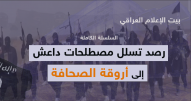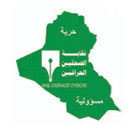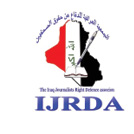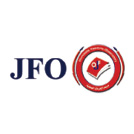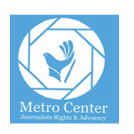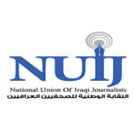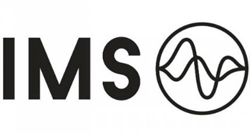Kidnapping an Iraqi female journalist fuels hate speech against journalism
الصفحة الرئيسية > تقارير الرصد الإعلامي > Kidnapping an Iraqi female journalist...
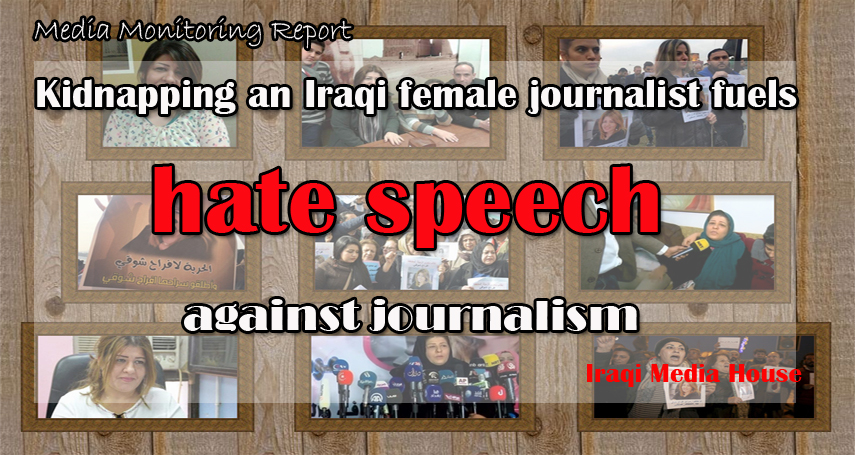
In its 26th report,Iraqi media house monitors kidnapping AfrahShawqi, Iraqi journalist and civil activist, by unknown militants and the local and international responses to this, in addition to the hate speech and incitement on social media against her before the kidnapping, after it, and after releasing her. All of those could be considered as new indicators for the increase of hate speech in local media. Iraqi media house tries to monitor those indicators, evaluate it, and make recommendations.
In December 26th 2016, the Iraqi authorities stated that AfrahShawqi, a former member in the national union of journalists, was kidnapped while she was at her house in al Sayydiyyah, in southern Baghdad, in addition to stealing her car, personal computer, and personal cell phone. The president, FuadMa’sum, and prime minister, Haider al Abadi, condemned that, while the security services opened an investigation. 9 days later, in January 3rd 2017, Shawqi was released by the kidnappers.
In a press conference held one day after releasing her, Shawqi stated that the militia, which kidnapped her “consisted of 15 veiled armed men, who claimed to be members in the Iraqi intelligence. I was transferred blindfolded”, she stated. “They conducted recorded investigations, most of it were related to social media”, she added.
The journalist and civil activist added that the main topic of the investigation was “the fake newsm published in al Sharq al Awsat newspaper about Arba’een.”
It is worth mentioning that Iraqi media house has previously prepared a detailed report on this topic in the 24th report, which is titled “a fake reportage deepens the mutual hate speech in Iraq.”
Shawqi mentioned that the way how the kidnappers treated her “has changed 4 days after kidnapping me; they told me that the public official and popular opinion was calling to release me. This is what indeed happened 5 days later. They have also gave me back all my belongings which they took when they kidnapped me.”
The presidency, government, and parliament together with local official entities like; “Popular Mobilization Forces” and “al Nujaba movement” in addition to some countries and international organizations that care about human rights and freedom of speech,condemned the kidnapping.
Iraqi media house monitors the discourse of the official and popular public opinion regarding the crime. It concluded a set of worrisome results, which could be considered a “serious escalation” of hate speech, which spread on social media and electronic platforms and involved officials and journalists, who had various ways to justify the kidnapping, then later claiming that the kidnapping was a “lie” without providing any evidence or documents. 2 days before releasing Shawqi,the prime minister, Haider al Abadi, said in a press conference that he gets the results of the investigations on daily basis, he also pointed out to “political purposes behind the kidnapping.”
This report documents how hate speech against Shawqi few months before the kidnapping, contributed to mobilize people against her using “unverified” claims, which could be an additional factor that encouraged the kidnappers to kidnap her. Shawqi pointed out to this after releasing her saying that she was investigated about a fake news published in “al Sharq al Awsat” newspaper few months after quitting working in it.
Journalists and civil activists have protested in January 2nd 2017 in front of the green zone in the middle of Baghdad, calling authorities to reveal the whereabouts of Shawqi. The protest was attacked by security forces; beating protesters and shooting them, then launching a new incitement campaign against journalists and civil activists.
The members of Iraqi media house registered a serious increase in the level of hate speech after incitements campaigns on social media have become a “serious danger” on individuals and organizations, especially in journalism; where public opinion has been mobilized against them using fake photos and news that could be adopted by users if social media then shared on their personal accounts, which could create a suitable environment for militias to kill and kidnap pushed by political or criminal motives.
The report noticed the existence of electronic armies (some were formed for noble purposes like supporting the Iraqi security forces in their war against ISIS or sympathizing with humanitarian issues like refugees) that was involved in the hate campaign against AfrahShawqi, and it even adopted extreme views regarding the kidnapping issue, which could pave the road to create a hostile environment against individuals and encourage assaulting them, the report provides examples of this.
In a phenomenon that has nothing to do with professionalism, monitors in Iraqi media house noticed that known visual and printed media outlets have used posts on social media as a source for reports and news covering the kidnapping of Shawqi, although it lack proofs and documents and the simplest requirements, what made those media outlets fall deliberately or accidentally into a dangerous trap that threatens professional journalism.
In this regard, Iraqi media house notes that it observed in its second report, issued in January 2015, titled “journalists facing incitement media”, the way how workers in journalism are being subject to incitement campaigns, including AfrahShawqi, and the way how some certain events are being used to defame media institutions, which contribute to provoke public opinion on social media against journalism.
In its new report, Iraqi media house also monitors the level and mechanism of hate speech regarding the event of kidnapping AfrahShawqi, which depended on republishing old news wrote by Shawqi and sharing it again on social media claiming that it is new and that it is the reason why she was kidnapped, using violent comments that justified the kidnapping.
The report monitors this issue in 3 stages; the time before the kidnapping, during, and after it, depending on accurate documentation using photos and hyperlinks in all monitor stages.
Recommendations
- Registering serious levels of incitement to killing and kidnapping that appeared after kidnapping AfrahShawqi, and which spread by individuals using direct words and involving public figures, the Iraqi prosecution should make an action very fast, within the borders of its duties mentioned in prosecution law, approved by the parliament in November 8th 2016. Article 5 of this law states that duties of the Iraqi prosecution include: first “filling public interest litigation and suits related to financial and administrative corruption and following it”, second “watching crime investigations and collection of required evidence to do all needed to reveal the details about the crime”, especially that platforms of incitement to violence are obviously spreading, and it doesn’t need extended investigations to solve it.
- Media outlets should prioritize the professional part in covering serious crises, especially those which are related to the destiny of individuals, groups and institutions, depending on real information based on documents and statements from the relevant people, instead of depending on social media as a main source for media coverage, knowing that media outlets’ trial to release their custody of what they publish, by mentioning that it is taken from social media, doesn’t professionally and legally release their custody in taking responsibility of fake news and incitement campaigns, which widen the social rift.
- Government and security authorities should protect journalists, especially those who get clear threats of murder or kidnapping and dealing seriously with journalists’ reports about being threatened instead of ignoring it. AfrahShawqi has stated few months before being kidnapped about being subject to violent incitement campaigns and direct threats.
- Spreading the culture of professional dealing with digital and electronic content by providing audience with the ways how they need to deal with published news, photos, and videos and explain the dangers of fake publications on security and social peace. Encouraging citizen journalism to enable as much as it is possible of audience to depend on their personal effort to reach accurate information related to important events instead of depending on unprofessional social media and media outlets. This could be done by encouraging a strategy of using social media and blogging.
Monitor report:
First: before the kidnapping:
Iraqi media house monitored posts on social media and incitement news reports against AfrahShawqi published by local media outlets. It included abuses, defamations, insults, and accusations of disloyalty and betrayal for foreign interties. There were other publications that were publicly calling to kill her during a campaign against the journalists of al Sharq al Awsat newspaper in Baghdad in which terms like “your blood is spilled with impunity” or “killing her is a virtue”. Iraqi media house also noticed that media platforms used the event to defame institutions in which Shawqi used to work, like “the national union of journalists”.
To read the monitor report klick here. اضغط هنا
Second: during the kidnapping:
Monitors in Iraqi media house observed the levels of responses on media outlets and social media, including accounts of public political and social figures, bloggers, journalists, and workers in media. The report noticed doubts about the kidnapping itself during 3 days after it, by spreading a story about her attempts to have asylum outside Iraq, while other posts included libeling her using vulgar insults and calls to persecute her.
Other publications included clear support justification of the kidnapping, by accusing Shawqi of writing a fake report (that Shawqi previously denied writing it and assured that she has quit working in the newspaper, where the report was published, few months before publishing it). Bloggers and public figurestried to hinder the defending campaign of Shawqi and defaming her work in addition to comparing her to female Arab journalists, who visited Iraq and praised certain entities.
Iraqi media house monitored widely spread hashtags on social media, that include serious incitement to hate, like; “the terrorist AfrahShawqi”, “bitch of Iraqi journalism”, “perfectly ISIS writer”, and “ISIS members of media and fakery”.
This discourse indicates a dangerous phenomenon, which is going beyond the kidnapping to using it in defaming media institutions and Iraqi journalists, trying to scare the workers in media field in a new challenge that could be added to the huge and serious challenges facing journalism in Iraq.
Iraqi media house also registered the act of using the event of kidnapping Shawqi to launch a new campaign against the popular movement and the people responsible for weekly peaceful demonstrations, which have been organized for one year and a half, calling for political reformation in Iraq. Another incitement and political defamation campaign targeted religious and political figures, who condemned the kidnapping.
Iraqi media house mentions here again that it registered in previous reports exploiting social and security events to launch defamation campaigns against political, religious, and social figures and to defame social events like protests and carnivals, in addition to accusing governmental and non-governmental sides.
To read the monitor report klick here. اضغط هنا-
Third: after releasing AfrahShawqi
In January 3rd 2016 the kidnappers released AfrahShawqi. Iraqi media house observed the reactions of media platforms, which wasn’t clear of hate speech and included dissatisfaction of releasing her and new incitement calls against her.
Some political, media, and social figures claimed that the kidnapping was fake, and spread, using their media platforms, claims of hiding deliberately to have asylum to a foreign country without providing any proofs. The incitement also targeted journalists and civil activists, who are colleagues of Shawqi. They were accused of cooperating with Shawqi to fake the kidnapping. A TV. show took time to doubt the kidnapping and incite against Shawqi.
To read the monitor report klick here. -اضغط هنا-




